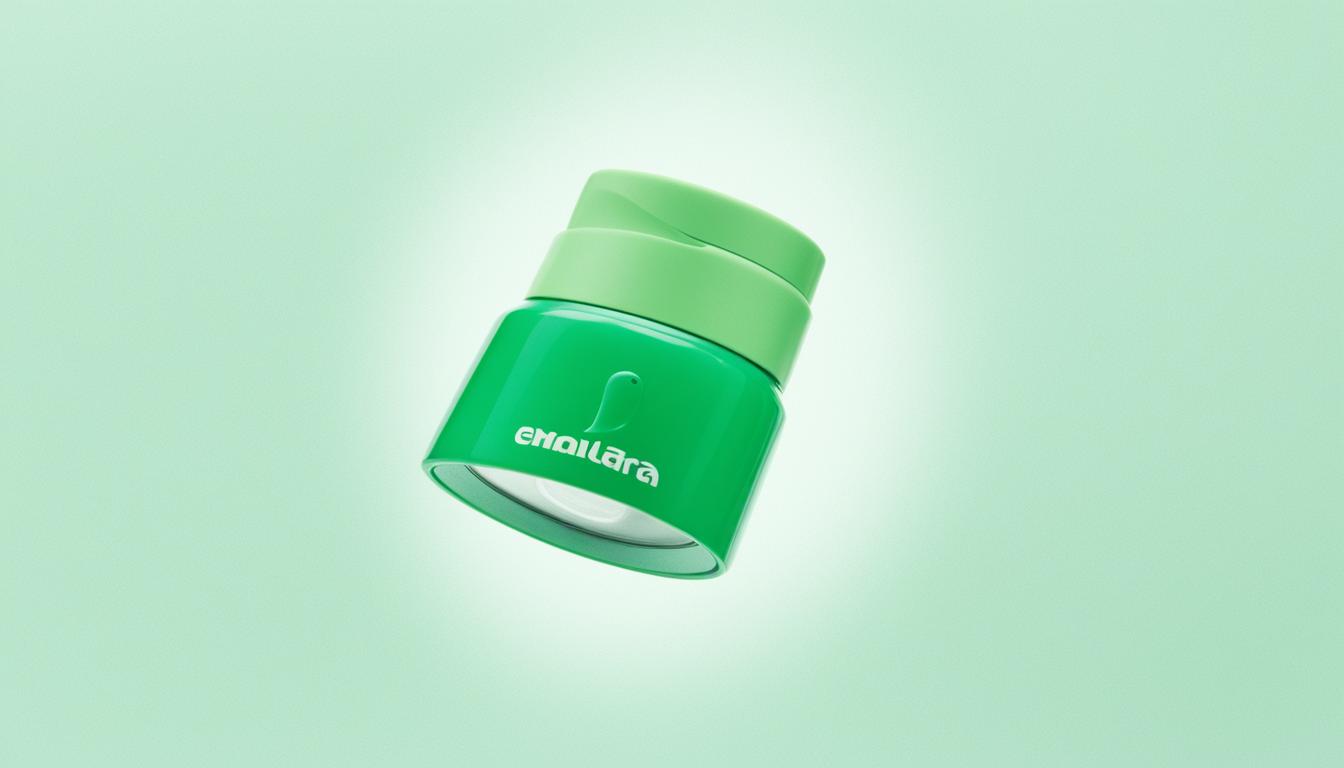Cost per lead (CPL) is a crucial metric in marketing. It looks at the cost to attract a new potential customer via marketing efforts. This metric is key for measuring how successful a marketing campaign is. It lets businesses gauge how good they are at getting potential customers.
We will explore CPL in marketing in this article. You’ll learn what it is, how to calculate it, see examples, understand its importance, and get tips on lowering CPL. This info is helpful whether you’re new to lead generation or aiming to improve your marketing strategies. Grasping CPL can help you reach cost-effective outcomes.
Key Takeaways:
- CPL is a marketing metric that measures the cost required to generate a new prospective customer
- Calculating CPL involves dividing the total ad spend by the total number of leads generated
- CPL is important for evaluating campaign success and optimizing lead generation efforts
- Tips to reduce CPL include conducting ad reviews, optimizing landing pages, and leveraging marketing automation
- CPL can vary across industries, channels, and types of ad campaigns
What Is CPL (Cost Per Lead)?
CPL stands for Cost Per Lead. It’s a key number in marketing that tells you how much it costs to get a new potential buyer. A “lead” is someone interested in what you’re selling. They show this by giving their contact info after choosing to do so.
When people opt-in, they might fill out a form, sign up for news, or ask for a quote. This action shows they’re ready to hear more from the company. It makes them valuable prospects for the team to work on turning into actual buyers.
Key Elements of CPL:
- Marketing Campaign: CPL is linked to advertising efforts, both online and off. It shows how well these efforts are at finding leads.
- Prospective Customer: A lead in CPL is someone who might buy and has shown interest.
- Opt-in: Choosing to opt-in is a big step. It means the lead wants to learn more and has given their info to do so.
CPL gives businesses a way to see how their marketing is doing in finding leads. It helps them understand the costs of getting leads. This info guides companies to use their marketing money wisely. It helps them focus on what works best to get more customers.
Now you know what CPL means. In the next part, we’ll look at how to figure it out.
CPL Formula: How to Calculate CPL
Finding out the Cost Per Lead (CPL) helps companies know if their ads work well. You only need two things: how much you spent on ads and how many people got interested because of them.
The way to figure out CPL is easy:
CPL = Total Ad Spend / Total Leads Generated by Campaign
This simple equation lets you see what each potential customer costs you. Let’s break down a real-life example to make it clear how to use the CPL formula.
Example:
Imagine a business spends $10,000 on online ads and gets 100 people interested. Divide the ad cost ($10,000) by the number of leads (100). So, each lead has cost the company $100.
| Total Ad Spend | Total Leads Generated by Campaign | CPL |
|---|---|---|
| $10,000 | 100 | $100 |
Knowing your CPL is key. It shows the real cost to get someone interested in your product or service. This insight helps in planning better and spending smartly on future marketing efforts.
Now, let’s see an example from the real world to better understand how CPL works in action.
CPL Example
Let’s look at an example to better understand CPL in digital marketing. Imagine a company spent $10,000 on digital marketing. They got 100 leads from this campaign. To find the Cost Per Lead (CPL), divide the total campaign cost, $10,000, by the total leads, which is 100. We learn the CPL for this campaign is $100.
From the example above, it’s clear checking your marketing campaign’s CPL is crucial. It shows how much you spend to get leads. This helps you see if your marketing strategies work well.
The example illustrates why it’s important to keep an eye on your CPL in digital marketing campaigns. By studying and improving the CPL, your marketing can be more cost-effective and bring better results.
What Is a CPL Model?
The CPL model is a strategy used in affiliate marketing. Advertisers pay for a user’s contact info here. It includes single opt-in (SOI) and double opt-in (DOI) ads. SOI ads count any user who shares their contact info as a lead. On the other hand, DOI ads need two steps from users to confirm their info. Leads from DOI are seen as more valuable and likely to convert.
Single Opt-In (SOI) CPL Ads
With SOI CPL ads, giving contact info makes you a lead right away. Users just fill out a form or sign up for a newsletter to qualify. Getting SOI leads is easier but they might not always lead to sales.
Double Opt-In (DOI) CPL Ads
DOI CPL ads ask for an extra step. After entering their details, users get an email or message to confirm. They become a lead only after this confirmation. DOI leads show more interest, making them more valuable.
Different CPL models and opt-in types help advertisers in their lead generation efforts. Choosing between SOI and DOI depends on the lead’s quality and the campaign’s goals. It’s crucial to weigh the value of leads in your strategy.
Why Is CPL Important?
CPL stands for Cost Per Lead. It’s super important for measuring how well marketing efforts are doing. It helps businesses understand how much they’re spending to get each lead. This makes CPL a must-have tool for checking if online ads are working well.
CPL’s beauty lies in its simplicity and how it can be used everywhere. It doesn’t matter the platform or channel used for advertising. CPL can be calculated and compared with other metrics easily. This lets businesses see how cost-effective their campaigns are.
With more people online than ever, CPL has become even more critical. New tech in online ads allows businesses to aim their ads better. This can lower the CPL and increase the number of people who actually buy something or sign up.
Using CPL in their marketing plans helps businesses. They can see how well their efforts to get new leads are working. Thanks to social media and digital channels, it’s simpler for businesses to reach their audience. This leads to a lower CPL and more high-quality leads.
In the end, CPL is all about checking if marketing campaigns are hitting the mark. It guides businesses on how to get leads in the most cost-effective way. By keeping an eye on CPL, businesses can use their budget smartly, reach the right people, and get more customers without breaking the bank.
Key Benefits of CPL:
- Measures the cost-effectiveness of marketing campaigns
- Enables comparison with other marketing metrics
- Evaluates success and effectiveness of lead generation efforts
- Allows optimization of resources and targeting of the right audience
CPL Importance in Marketing
| Benefits of CPL | Description |
|---|---|
| Cost-Effectiveness | Measures the efficiency of marketing campaigns in acquiring leads |
| Comparison with Other Metrics | Enables evaluation of campaign success in comparison to other marketing metrics |
| Lead Generation Optimization | Helps businesses make data-driven decisions to optimize lead generation efforts |
| Resource Allocation | Assists in allocating marketing resources effectively for maximum impact and ROI |
Given the rise of online advertising and many digital channels, businesses must focus on measuring CPL. Understanding CPL’s value enhances marketing strategies. By grasping CPL’s role, businesses can excel in meeting their lead generation targets.
6 Tips to Reduce CPL
To lower CPL and get better leads, companies can use different strategies. These include improving ad campaigns, making landing pages better, and using marketing automation. Here are six tips that can really help lower CPL:
1. Conduct Ad Reviews
Reviewing your ads is key to reducing CPL. Look at how your ads are doing and where they can get better. Check things like click-through rates (CTR), conversion rates, and Cost per Click (CPC). By making your ads and targeting better, you’ll get more conversions and better leads.
2. Optimize Landing Pages
Landing pages are super important for converting leads. Make them better to improve user experience and get more conversions. They should have clear messages, strong call-to-action (CTA) buttons, and easy-to-use forms. A better landing page will increase lead quality and lower CPL.
3. Segment Campaigns via Networks
Dividing your ads by networks helps find the less effective ones. By organizing campaigns by network, you can see which ones work best. This lets you invest in the best partners and get better leads at a lower cost.
4. Use Targeted Ad Campaigns
For lower CPL, you must reach the right people with your ads. Use targeting options on ad platforms, like age, interests, or behavior. Targeting more precisely means more relevant leads who are likely to convert, which lowers your CPL.
5. Leverage Marketing Automation
Marketing automation makes generating leads smoother and more efficient. Automate tasks like nurturing leads, following up, and scoring leads. This saves time and lets your team focus on important tasks. Good use of automation leads to better leads and lower CPL.
6. Continuously Monitor and Optimize
Regular checks and improvements are vital for lowering CPL. Always look at your campaign data, metrics, and conversion rates. Use this data to spot trends, patterns, and things to improve. By constantly tuning your campaigns and landing pages, you’ll see better results and further reduce CPL.
Putting these six tips into practice can really lower your CPL and bring in high-quality leads. Focus on reviewing ads, making landing pages better, dividing campaigns, targeting correctly, using automation, and always optimizing. Doing these things can make lead generation more cost-effective.
CPL Advantages for Publishers
CPL, or Cost Per Lead, offers several advantages for publishers in the digital marketing landscape.
1. Attractive Revenue Model
One major benefit of CPL is that publishers get paid for each lead they generate. This is different from other models where payment might come from ad views or clicks. This means publishers earn through actual results, making their earnings potentially more.
2. Targeted Targeting
With CPL, publishers aim for more specific audiences. This means they can connect better with people likely to respond to the offers. Through this focus, publishers can forge stronger bonds with niche markets. This leads to higher-quality leads and better engagement with audiences.
3. Higher Rates
CPL campaigns often pay more than other advertising models. This is because the leads they generate are very valuable to advertisers. Publishers are essential in generating these leads. Thus, they get higher rates for their valuable leads. This helps boost their income and strengthens their partnerships with advertisers.
CPL Disadvantages for Publishers
CPL has downsides for publishers that can’t be ignored. These issues can affect how much money they make, how long campaigns last, and how many sales they get. Publishers need to know these problems well to lessen their bad effects.
1. Revenue Unpredictability
One big problem with CPL for publishers is not knowing how much money they’ll make. They get paid only if they generate a lead, unlike being paid for clicks or views. This makes it hard for them to know how much they’ll earn and plan their budget.
2. Campaign Length Uncertainty
Not knowing how long a campaign will last is another issue with CPL. Campaigns go on until they hit a lead goal or spend all their budget. This makes it tough for publishers to decide when to end or change a campaign.
3. Missed Conversions
Tracking mistakes can lead to missed sales, hurting publishers financially. If tracking is off, they might not get credit for leads or miss some altogether. This can mean losing out on money and not getting a full reward for their hard work.
Summary Table: CPL Disadvantages for Publishers
| Disadvantages | Impact |
|---|---|
| Revenue Unpredictability | Challenges in accurately forecasting revenue |
| Campaign Length Uncertainty | Difficulty in determining when a campaign has run its course |
| Missed Conversions | Financial loss due to tracking errors and missed revenue opportunities |
Publishers must watch and tweak their CPL campaigns closely. By handling issues like unsure revenue, unclear campaign lengths, and tracking errors, they can reduce bad impacts and up their chance to make more money.
CPL Benchmark Averages by Industry
Measuring the effectiveness of marketing efforts is easier with CPL benchmarks. Industries vary widely in their average CPL, affected by many factors. Knowing the benchmarks can show if a marketing campaign is working well.
By looking at CPL benchmarks, marketers understand their performance better. This knowledge helps improve their strategy. Making changes based on data helps them get more leads.
Importance of CPL Benchmark Averages
CPL benchmarks offer a way for marketers to measure their success. They compare their cost per lead to industry norms to see their standing. This comparison can highlight a campaign’s strengths or areas needing work.
These benchmarks assess how cost-effective marketing strategies are. Businesses can then set realistic goals. By knowing where their CPL stands, marketers find ways to lower costs and improve outcomes.
Industry-Specific CPL Benchmarks
Here are some average CPLs by industry to guide you:
| Industry | Average CPL |
|---|---|
| eCommerce | $15 – $30 |
| Healthcare Services | $40 – $60 |
| Software as a Service (SaaS) | $50 – $80 |
| Finance and Insurance | $80 – $120 |
| Real Estate | $100 – $150 |
| Education | $20 – $40 |
Remember, these CPL benchmarks can change because each business is unique. Keeping an eye on your metrics is key to staying competitive.
Leveraging CPL benchmarks helps marketers understand trends in their industry. It’s vital to keep these benchmarks updated to stay ahead of the market changes.
Using CPL benchmarks, companies can fine-tune their marketing. These benchmarks guide marketers towards better results. It helps them make smart decisions for successful marketing campaigns.
Conclusion
CPL, or Cost per Lead, is a key way to see how much it costs to get a new potential customer. By looking at CPL, companies can check if their ads are working well. It shows how well they’re doing in finding new customers without spending too much.
Lead generation is very important in marketing. CPL lets companies see how good they are at getting new leads. They compare CPL to other important numbers like conversion rates. This helps them see where they can get better and make smart changes to spend less money.
To lower CPL, try bettering landing pages, checking ads, and using marketing tools wisely. These steps can make leads better and help get more out of money spent on campaigns.
In the end, using CPL in marketing is very helpful for companies. It lets them know how much they’re spending to get leads. By looking at CPL closely, improving how to get leads, and using the tips shared, companies can spend less money and still get great results.




